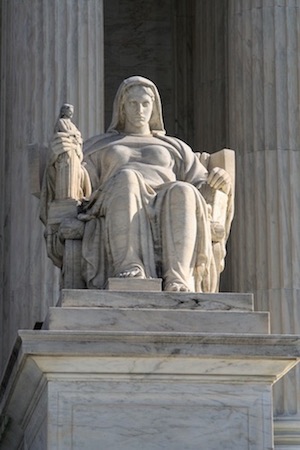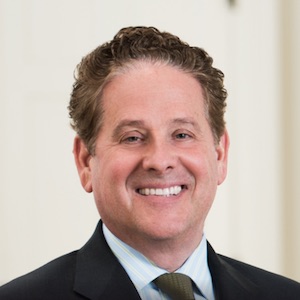 In May, the Supreme Court’s highly anticipated decision in TC Heartland v. Kraft Food Group Brands LLC addressed venue for patent infringement litigation, which many hoped would deal a potentially huge blow to the Eastern District of Texas (EDTX), the long-favored venue for plaintiffs. Initially, some in the patent community wondered if the ruling could put non-practicing entities (NPEs) on life support. However, early data and judicial decisions indicate that NPEs are here to stay. As such, companies would do well not to let their IP guard down in light of the ruling.
In May, the Supreme Court’s highly anticipated decision in TC Heartland v. Kraft Food Group Brands LLC addressed venue for patent infringement litigation, which many hoped would deal a potentially huge blow to the Eastern District of Texas (EDTX), the long-favored venue for plaintiffs. Initially, some in the patent community wondered if the ruling could put non-practicing entities (NPEs) on life support. However, early data and judicial decisions indicate that NPEs are here to stay. As such, companies would do well not to let their IP guard down in light of the ruling.
So what does TC Heartland actually mean for patent litigation going forward?
Unfortunately, the answer may be not as much as many expected. Right after the decision there were 350 motions to transfer or dismiss in the EDTX. But the limitations imposed by TC Heartland have been called into question by a ruling from EDTX Judge Rodney Gilstrap in Raytheon Co. v. Cray Inc. In his decision, Gilstrap denied a motion by Cray seeking to transfer the case to another district in light of TC Heartland. Gilstrap found that the existence of a single employee in the district constituted “regular and established place of business,” and he established a four-factor test to decide whether newer cases belong in the district.
While TC Heartland was never going to help companies with a more universally accepted “regular and established place of business” in the EDTX (big banks, hotel chains, national retailers), this early precedent does not bode well for those who hoped it would reduce NPE litigation for companies that do not have those established places. Even prior to Gilstrap, early data showed that NPEs were simply moving to other districts. Since a whopping 64% of corporations incorporate in Delaware, and because patent suits there typically rule in favor of NPEs, an obvious workaround could be a major shift of patent litigation to the state. Unified Patents predicted that filings in the EDTX would decrease by 69% (about 1000 fewer cases per year), with the majority of those cases instead being filed in Delaware or the Northern District of California, where many high-frequency defendants are headquartered.
Even if Congress decides to pick the venue mantel back up in its outrage over Gilstrap (House IP subcommittee chairman Darrell Issa said the committee would consider new legislation as a result), true venue clarity will take some time. In the meantime, there are countless opportunities for litigation thanks to global digital transformation. Historically, NPEs have capitalized on large digital shifts that create new monetization opportunities. We saw this in the 1990s with the rise of the internet, when NPEs gobbled up and asserted huge numbers of internet patents. There is little doubt they will do the same again, seizing upon emerging opportunities and vulnerabilities created by the cloud, AI, IoT, etc.
With Gilstrap granting NPEs a lifeline for now, companies can’t afford to let their guard down with regards to IP protections and business strategy. Constant technology shifts provide nearly limitless new avenues for NPEs to assert, and it is becoming clear that protection from the courts and Congress is not coming any time soon. Companies need to look for creative solutions – likely in the private sector for now – to protect themselves from IP infringement suits. There are a number of options popping up for companies to utilize, including non-profit support and some great private sector protections offered by technology providers.
As hopeful as some folks were about TC Heartland, it certainly hasn’t stopped NPEs. The IP community must acknowledge this and adjust accordingly – it’s still the wild west out there, for now.

![[IPWatchdog Logo]](https://ipwatchdog.com/wp-content/themes/IPWatchdog%20-%202023/assets/images/temp/logo-small@2x.png)

![[Advertisement]](https://ipwatchdog.com/wp-content/uploads/2024/04/Patent-Litigation-Masters-2024-sidebar-early-bird-ends-Apr-21-last-chance-700x500-1.jpg)

![[Advertisement]](https://ipwatchdog.com/wp-content/uploads/2021/12/WEBINAR-336-x-280-px.png)
![[Advertisement]](https://ipwatchdog.com/wp-content/uploads/2021/12/2021-Patent-Practice-on-Demand-recorded-Feb-2021-336-x-280.jpg)
![[Advertisement]](https://ipwatchdog.com/wp-content/uploads/2021/12/Ad-4-The-Invent-Patent-System™.png)







Join the Discussion
2 comments so far.
Paul F. Morgan
September 7, 2017 10:04 pmJudge Gilstrap’s venue transfer denial decisional basis in Raytheon Co. v. Cray Inc. is not controlling on any other D.C. judges, and is reportedly being mandamus challenged. The dust will start to settle a bit when the Fed. Cir. decides some cases.
But in any case the PAE business model has been far more impacted by IPRs, Alice-101 preliminary motions and attorney fee sanction awards than by TC Heartland.
Night Writer
September 6, 2017 05:47 pmHow does Lemley’s numbers (LexMachina) on new patent suits fit into this?